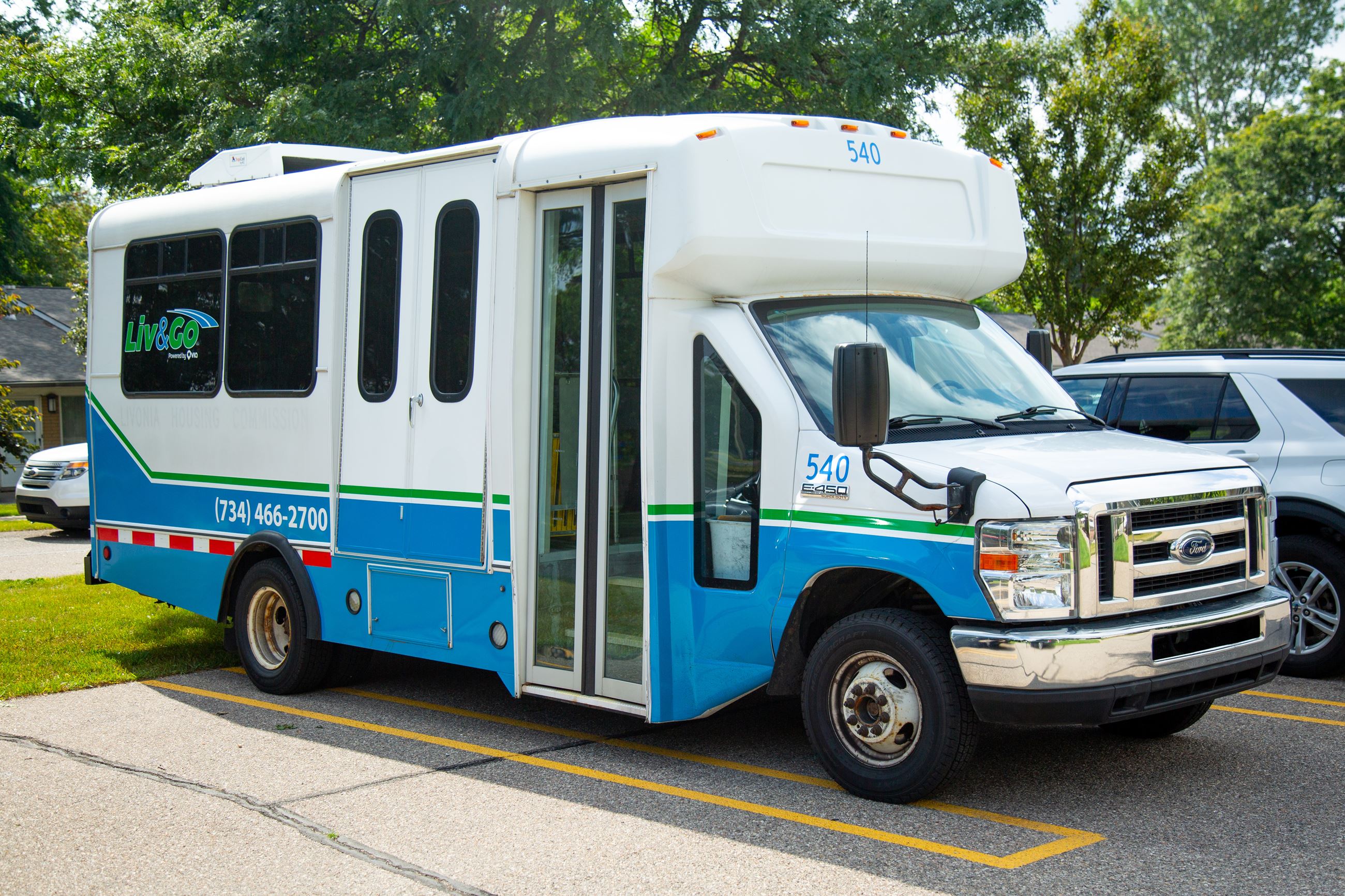Navigating Livonia, Michigan efficiently requires understanding the diverse transportation options available in this Detroit suburb. Whether you’re a long-time resident or new to the area, navigating Livonia presents both unique challenges and opportunities. The city’s suburban layout means that while it lacks the comprehensive public transit systems of larger urban centers, it offers specialized services tailored to local needs alongside well-maintained roads for drivers and growing infrastructure for cyclists.
As a predominantly car-centric community, many Livonia residents rely on personal vehicles for daily transportation. However, the city recognizes the importance of providing alternatives, particularly for seniors, individuals with limited mobility, and residents without access to a car. From the community-focused Liv&Go service to the extensive network of major roadways and emerging bicycle paths, Livonia offers multiple ways to navigate the city. This guide will explore your transportation options in detail, helping you make informed decisions about the most efficient and convenient ways to commute within and beyond city limits.

- Public transit in Livonia includes the Liv&Go service, providing accessible and convenient travel options. Source: livonia.gov
Liv&Go stands as Livonia’s primary public transportation service, designed specifically to serve community needs rather than operating as a traditional fixed-route bus system. This specialized service provides transportation to various destinations, including medical appointments, shopping areas, employment locations, physical therapy centers, and salons. The service area covers the entirety of Livonia and extends up to one mile outside city limits, specifically for medical appointments. Eligibility extends to all Livonia residents, as well as non-residents traveling within city boundaries, though the service cannot accommodate children under 18 years of age.
Operating Monday through Friday between 7 a.m. and 6:30 p.m., Liv&Go functions on a reservation-based system. The service implements a modern approach to ride management with a Via-powered routing system that allows users to book appointments, track their rides in real-time, and make payments through a smartphone app available for both iPhone and Android devices. For those who prefer traditional methods, reservations can also be made by phone at (734) 466-2700. It’s worth noting that service is suspended during inclement weather days when Livonia Public Schools close, so winter travelers should have backup plans ready.
Liv&Go maintains an affordable fare structure with rides costing $3 each way. This straightforward pricing makes budgeting for transportation needs simple and predictable for regular users. Passengers have multiple payment options, including cash (exact fare required as drivers cannot make change), individual tickets at $3 each, or punch tickets priced at $30 for ten rides, offering a convenient option for frequent travelers. The punch ticket system effectively provides the same service at the same price point but eliminates the need to carry exact change for each journey.
When Liv&Go cannot meet transportation needs, Livonia residents have access to several alternative transportation resources. These include specialized services like Ambu Trans, Fidelity Transportation, and Reddi Ride, which may offer different service areas or hours. St. Mary Hospital Transportation Service provides medical-focused transportation, while services like Go Go Grandparent help seniors utilize rideshare platforms such as Uber and Lyft. GO Seniors offers specialized assisted non-emergency transportation throughout greater Metro Detroit. While the city doesn’t officially endorse these services, they provide valuable transportation options when the municipal service isn’t available or doesn’t meet specific needs.
Driving remains the primary mode of transportation for most Livonia residents, facilitated by the city’s well-planned road infrastructure. The city is strategically positioned with excellent access to major highways, including I-96, which runs east-west through the northern part of Livonia, connecting to downtown Detroit and the western suburbs. I-275 borders the western edge of the city, providing north-south connectivity to surrounding communities. These highways make commuting to major employment centers like Detroit, Ann Arbor, and other suburban business districts relatively straightforward despite distance.
Within Livonia itself, several major arteries facilitate efficient travel across the city. These include east-west thoroughfares like 8 Mile Road, 7 Mile Road, 6 Mile Road (also known as McNichols), 5 Mile Road, Plymouth Road, Joy Road, and Schoolcraft Road (which parallels I-96). Major north-south roads include Middlebelt Road, Merriman Road, Farmington Road, Newburgh Road, and Wayne Road. This grid system makes navigation intuitive for newcomers and provides multiple route options for residents familiar with local traffic patterns.
Parking in Livonia rarely presents the challenges found in denser urban environments. Most commercial areas, shopping centers, and business parks offer ample free parking. The suburban design of the city, with its spacious commercial developments, typically eliminates parking concerns that might affect commuters in more congested cities. Even during peak shopping seasons at major retail centers like Laurel Park Place or Livonia Marketplace, parking remains generally accessible, though you might need to walk slightly further during especially busy times.
Traffic patterns in Livonia follow predictable suburban rhythms, with the heaviest congestion occurring during weekday morning and evening rush hours, typically 7-9 a.m. and 4-6 p.m. The areas surrounding I-96 interchanges, particularly at Middlebelt, Merriman, and Farmington Roads, can experience significant backup during these peak times. Similarly, major retail corridors like Plymouth Road and the area around the Livonia Mall site see increased traffic during weekend shopping hours. Local drivers often develop preferred alternate routes using residential streets to bypass the most congested areas during peak times.
Cycling infrastructure in Livonia has seen gradual improvements as the city works to become more bike-friendly. The Livonia Bicentennial Park Trail offers a scenic 3-mile paved path popular with recreational cyclists. The city has also implemented dedicated bike lanes on sections of several major roads, including Newburgh Road and 7 Mile Road, though the network remains somewhat fragmented. The I-275 Metro Trail runs along the western edge of Livonia, providing north-south connectivity for cyclists and connecting to broader regional trail networks.
For commuting cyclists, Livonia’s wide suburban roads often provide adequate shoulder space, but dedicated infrastructure remains limited in many areas. The city has adopted a non-motorized transportation plan that aims to expand bicycle infrastructure and connectivity between residential areas, parks, schools, and commercial districts. Ongoing development projects increasingly include considerations for cycling access, indicating a gradual shift toward more comprehensive transportation options throughout the city.
Safety considerations are paramount for Livonia cyclists, as much of the city was designed primarily for automobile traffic. Visibility is a particular concern, especially during early morning or evening commutes when lighting may be limited. Cyclists should prioritize high-visibility clothing, proper lighting, and reflective gear. The city’s wide, straight roads can sometimes encourage higher vehicle speeds, so defensive cycling practices are essential. Using the growing network of designated bike lanes, where available, and planning routes through residential areas with lower traffic volumes can significantly enhance safety.
Some areas of Livonia have developed more bike-friendly characteristics than others. The neighborhoods surrounding Schoolcraft College, Madonna University, and the Civic Center area offer relatively calm streets with good connectivity to destinations. The Bicentennial Park area provides access to recreational cycling opportunities, while the developing Livonia Vision 21 corridor aims to create more pedestrian and bicycle-friendly environments. As Livonia continues to change, advocates push for Complete Streets policies that would ensure future road projects accommodate all users, including cyclists, potentially transforming the biking landscape across the city in the coming years.

